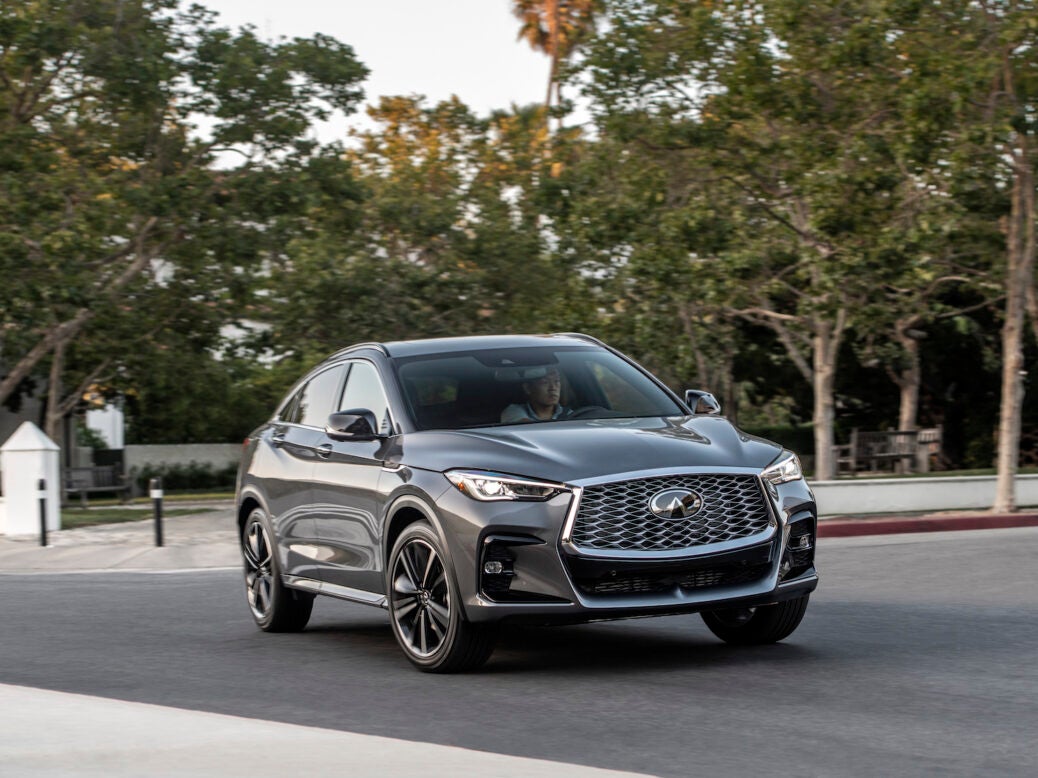
Infiniti
Where did it all go wrong for Infiniti? US sales are down by more than 40 per cent to just 21,805 cars and SUVs and this, remember, is the luxury division’s number one market.
Even though there has been a local manufacturing JV with Dongfeng for some years, Infiniti has failed to gain traction in China. During the first half of 2022, sales amounted to just 641 units. Lexus, which relies solely on imports, retailed 87,103 vehicles (mainly the ES and RX) during the same six-month period.
Nissan’s official line continues to be that’s committed to China but you do wonder how much more pain the company can take. Especially when the brand itself also needs a reset with a long-needed move to EVs facing delay after delay.
Of course there are supply issues at work yet Infiniti was in trouble years ago, the obvious problem being a legacy of under-investment. Look at its best selling sedan, for instance, the Q50 being now nine years old. This car’s replacement clearly needs to be electric and launched this year. That won’t happen though.
There is at least some good news, with the QX60, an SUV that arrived in 2021, being a good performer in the US. This demonstrates that the brand isn’t badly damaged; it’s just needs new models as well as more fuel efficient engines and electric options.
Hopefully Nissan won’t make its dealers wait until the QX60’s mid-cycle refresh – likely for the 2026 model year – until a QX60 EV arrives, or even a Q50 REEV.
One size down, the replacement for the QX50 might be the electric Infiniti which Nissan Motor America stated in February that it would build in Mississippi from 2025. This vehicle will share a platform and other major components with a similarly sized Nissan, also to be made at the Canton plant.
The big QX80, a ladder frame chassis 4×4, must be a handsome earner for the division, pricing being high, volume good and development costs paid off long ago. Now more than a dozen years old, it’s up for replacement not in 2022 but next year. There are even whispers that the launch might not happen until 2024.
The brand’s biggest SUV should carry over its 5.6-litre V8 although Nissan’s VC-Turbo engine might also be available. This huge, up to eight-seater vehicle will be sold mostly in North America, Australia, certain Gulf States and possibly Russia.
For details of other models’ life cycles and scheduled replacement dates, see the link to PLDB at the end of this report.
Venucia
Nissan’s premium brand hasn’t fared well in the world’s largest new car market, something which cannot be said of the company’s special JV brand for China.
Venucia started life as a series of old-tech models but that era is over so Nissan and Dongfeng are investing in the division’s future with – no surprises here – a new emphasis on electrification.
The partners cannot have failed to notice that Venucia’s best seller of 2022 is the D60, which on the face of it, seems puzzling. Now more than four years old, the 4.8 m long sedan accounts for almost half of the brand’s 44,405 retail sales in H1.
The D60, a fairly ordinary model, albeit one that’s priced attractively, also happens to be the only Venucia available in EV form. The car has a 58 kWh battery pack, and the maximum range is claimed to be 481 km (NEDC). Its successor should arrive in 2024.
The next D60 EV should be equipped with the range-extending electric powertrain of the Nissan Sylphy. This consists of a 100 kW and 300 Nm motor supplemented by a 1.2-litre three-cylinder petrol engine. This never drives the wheels, acting solely as a back-up power unit.
As for other models, the T60 and Star (see PLDB for each) have been far less successful in 2022. Still, each has a few years of production remaining. That’s not the case for the T90, introduced in December 2016. This crossover, which has strong links to the Nissan Murano, is soon to be discontinued.
Whether or not Venucia will ever return to the huge volume of its early years remains to be seen. At the moment, Dongfeng and Nissan are planning something of a reset following almost four years of control solely by the Chinese OEM. With Nissan Motor back on board, that will mean an array of new models from 2023 onwards underpinned by R-N-M Alliance platforms.
Reports for many other manufacturers’ future models are grouped in the OEM product strategy summaries section of Just Auto.
Future platform intelligence
More detail on past, current and forthcoming models can be found in PLDB, the future vehicles database which is part of GlobalData’s Automotive Intelligence Center.
This report is the fifth in a series for the Renault-Nissan Alliance’s divisions and brands. First came a feature on Renault, followed by Alpine, Dacia and Mitsubishi. Nissan will be the subject of the final installment.
